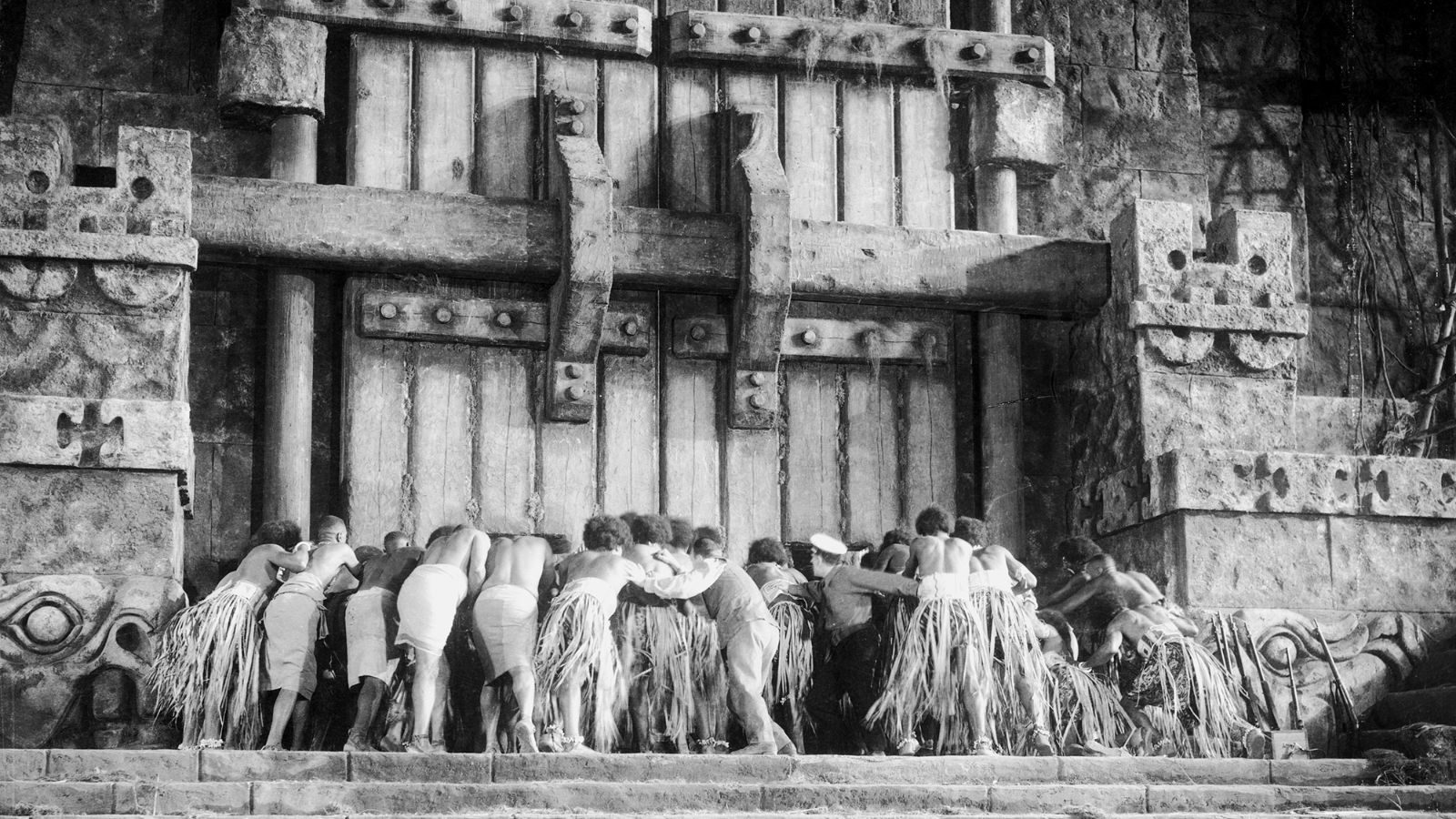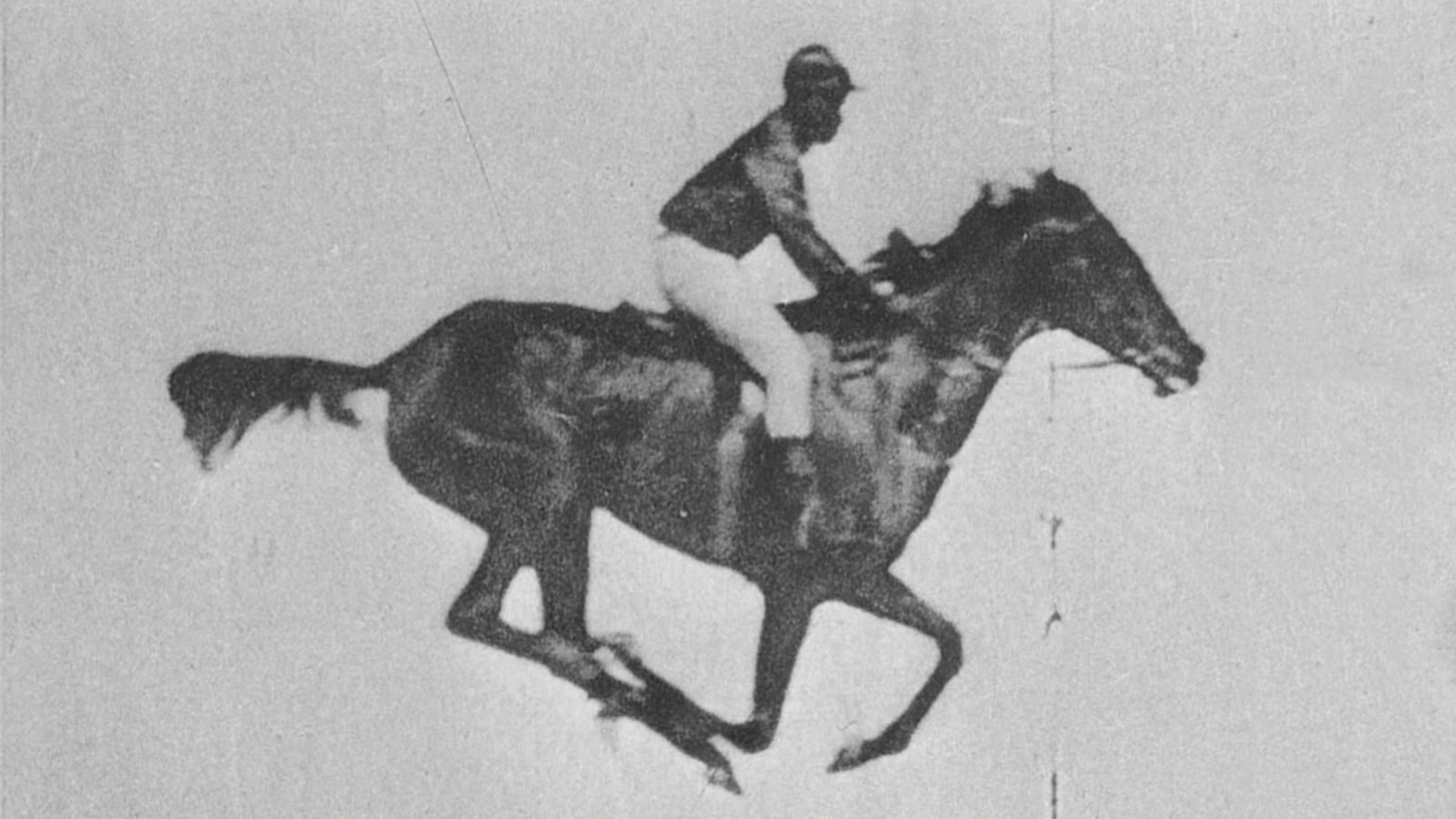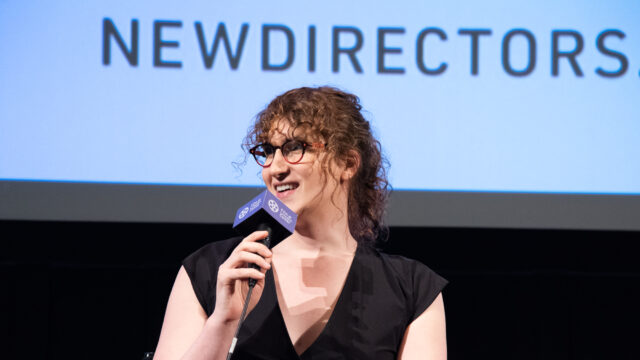Animal Locomotion Plate 626 + King Kong
Save with the purchase of three tickets or more with the 3+ Film Package. Discount automatically applied when adding tickets to at least three films to your cart.
Animal Locomotion Plate 626
Eadweard Muybridge, 1887, USA, 35mm, 15m
Originally a landscape and architectural photographer, Eadweard Muybridge is primarily known today for his pioneering work in photographic studies in motion. One of his primary working methods involved rigging large cameras in a line to shoot images automatically as his subjects passed. When viewed through his zoopraxiscope machine (a predecessor to the film projector), these photos transformed into moving images. A key reference point in NOPE, Animal Locomotion Plate 626 depicts an uncredited jockey on a galloping horse—originally published in Animal Locomotion, a portfolio of 781 separate series that Muybridge produced with the University of Pennsylvania. These 16 photographic plates were filmed and animated on IMAX for Peele’s feature and, for the occasion of this series, this animated loop has been transferred to a 35mm film print to be screened before King Kong.
“The first film.
A four second loop is comprised of 16 sequential photographs. The horse is named Annie, but the identity of the jockey—the star of the film—is unknown.” —Jordan Peele
Followed by:
King Kong
Merian C. Cooper and Ernest B. Schoedsack, 1933, USA, 35mm, 100m
Ninety years ago, former aviator and journalist Merian C. Cooper and his co-director, Ernest B. Schoedsack, forever changed the art of cinema with this prehistoric fever dream of humanity’s desire to exploit nature. In many ways the first true blockbuster and progenitor of the giant monster movie, King Kong revealed to audiences in 1933 visual ideas they had never seen before—from the godlike Kong’s brawl with a T-rex on Skull Island to the iconic image of the “Eighth Wonder of the World” atop the Empire State Building. Credit is due in large part to the trailblazing stop-motion effects by Willis O’Brien, who designed Kong as an alternately rampaging force and tragic figure eerily resembling the human form, consequently transforming a mute creation into a powerful symbol of the times. Indeed, King Kong captured the 20th-century imperialist worldview within an atmospheric horror-fantasy packed with pyrotechnics.
“One of the great films about filmmaking. A primal kaiju horror about the need to capture, sell, and sacrifice the exotic masculine spectacle. A pinnacle of craft and exploitation in filmmaking.” —Jordan Peele








